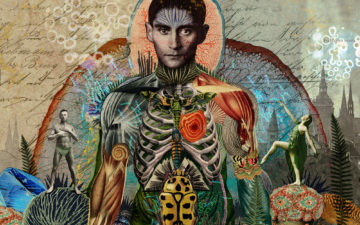Will Rees in Aeon:
 A few months before he died, Franz Kafka wrote one of his finest and saddest tales. In ‘The Burrow’, a solitary, mole-like creature has dedicated its life to building an elaborate underground home in order to protect itself from outsiders. ‘I have completed the construction of my burrow and it seems to be successful,’ the protagonist notes at the outset. Quickly, however, the creature’s confidence begins to wane: how can it know if its defences are working? How can it be certain?
A few months before he died, Franz Kafka wrote one of his finest and saddest tales. In ‘The Burrow’, a solitary, mole-like creature has dedicated its life to building an elaborate underground home in order to protect itself from outsiders. ‘I have completed the construction of my burrow and it seems to be successful,’ the protagonist notes at the outset. Quickly, however, the creature’s confidence begins to wane: how can it know if its defences are working? How can it be certain?
Kafka’s protagonist wants nothing less than complete security, so nothing can be left out of its calculations. In the small world of its burrow, every detail is significant, a possible ‘sign’ of a looming attack. Eventually, the creature begins to hear a noise it believes to be that of an invader. The noise is equally loud wherever it happens to be standing. It would appear, then, to originate within the creature’s own body: the sound, perhaps, of its own heart beating, its own frantic breathing; life happening and ebbing away, while the creature is worrying about something else.
‘The Burrow’ seems to serve as a retrospective commentary upon Kafka’s own life. By the time he was diagnosed with tuberculosis at the age of 34, Kafka had already spent two decades worrying about disease.
More here.
